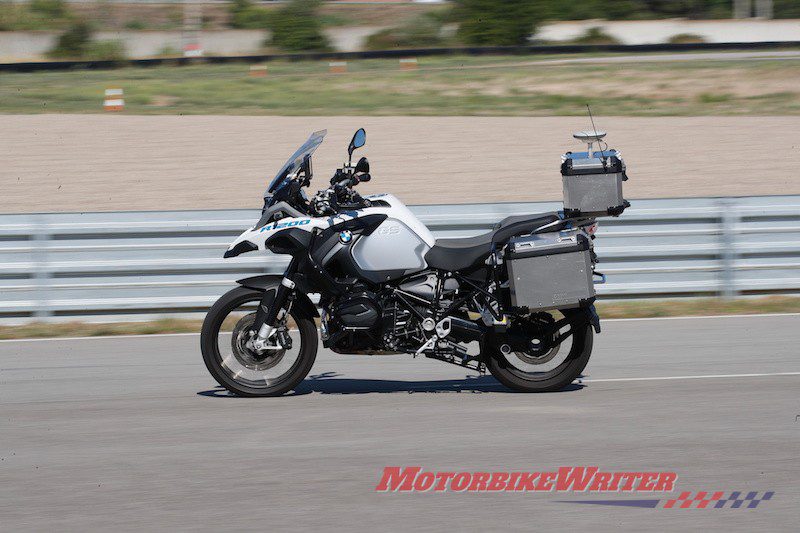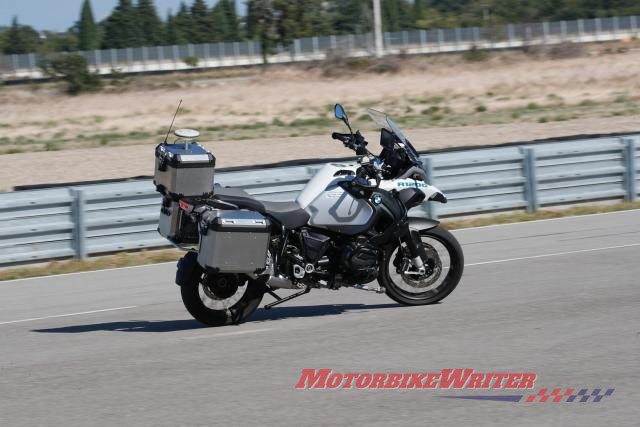(Contributed post by Steve Charli)
With artificial intelligence and self-driving cars dominating the automotive industry, one can’t help but wonder if there’s any technology that’s similar in the motorcycle industry. And to my delight, I’ve found that BMW has already made something similar.
Cue BMW engineer Stephan Hans, as he steps off the new BMW R1200GS.
He gives it a gentle nudge, and the R1200GS proceeds to speed off, looping around the parking lot.
The audience is intrigued.
The bike handles the loops the way a human biker would, leaning into the turn.
The motorcycle ends this spectacle by rolling to a calculated stop right in front of its engineer.
Hans sets the kickstand like a writer punctuating the end of a sentence. It is an exclamation point.

If you think that the idea of a fully-automated motorcycle seems strange, you’re not alone in that thought. I share the sentiments. While the reasons that a person would grow a love for motorcycles vary, one of those reasons will always be the thrill of the ride. It is an experience that is unique to motorcycles and to have self-driving motorcycles is anathema to that joy.
But even as this would seem like nothing more than a really cool party trick, there lies a necessity in creating a self-driving motorcycle, and it’s not with the intention of replacing human riders as was initially assumed.
The wisdom behind building a self-driving motorcycle is to enable the motorcycle to take necessary corrective measures that are going to help put a rider back on track. This is based on the rationale that motorcycles are less stable than cars. After all, if most modern cars have driving assistive technologies, wouldn’t these technologies have a more significant effect on motorcycles?
This is especially true when you consider that unlike cars that have extra external protection, motorcycles are built to be light and compact, and therefore do not enjoy the same level of protection. This means that motorcycle riders have a higher risk of sustaining injuries in the event that they find themselves in an accident.
Besides human error, the loss of control — even momentarily — is the leading cause of accidents. Add the fact that like bicycles, motorcycles are also difficult to see according to this site cohenjaffe.com/accident-lawyer/types-of-accidents/bicycle-accidents/.
This is the rationale upon which the development of the R 1200 GS was built. In the moments where a rider may lapse in judgment, whether because of a lack of experience or because they simply made an error, the self-driving motorcycle can step in subtly.
This can be in the form of a slight adjustment to steering in order to navigate a turn better, or the prompt applying of brakes, or automatic stabilization when the motorcycle senses that the rider is off-balance.
This direction makes so much sense, especially in an age where car manufacturers seem to cram as many safety features as they can into every new model. We definitely have the technology, all we need now is the intention. And with the development of the R1200GS, it would seem that motorcycles are about to get much more secure and beginner-friendly.


